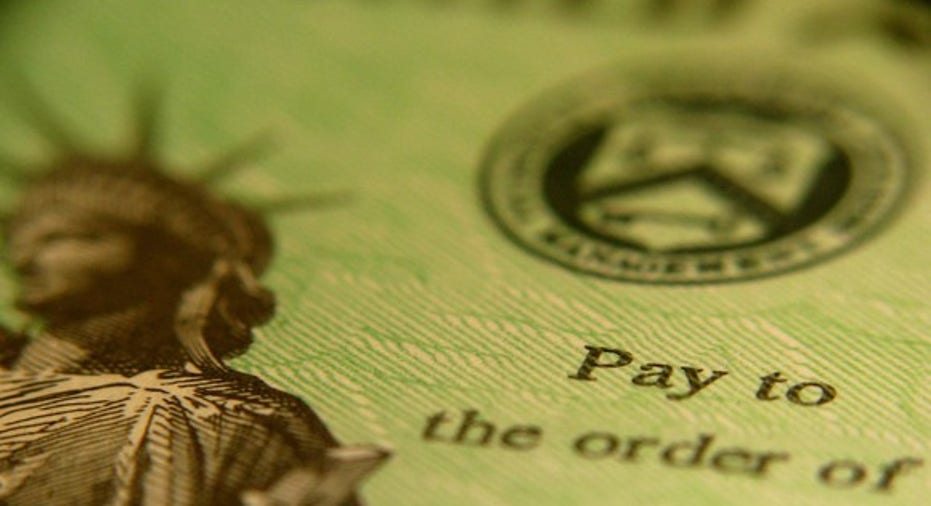5 Ways to Get a Bigger Tax Refund

Most people don't look forward to tax season, because of the hassle of preparing tax returns and, of course, paying taxes. Most people actually should look forward to it, though, because most people will receive a refund. Below are five ways to get a bigger tax refund. Be careful, though, because a big refund isn't necessarily a wonderful thing.
First, though, a review of some tax refund stats. In a typical year, roughly 80% of the nearly 150 million individual tax returns processed by the IRS end up with a tax refund. The average amount of those refunds is roughly $3,000. Receiving a tax refund is often a joyous event, as it feels like you're receiving a bonus, a windfall, or even a gift from the government. That's the wrong way to think about it, though, because a refund actually means that you overpaid your taxes due during the course of the year, making funds available for Uncle Sam to use that were not available for you to use. Still, refunds can be put to good use, especially if someone who has not been good about saving throughout the year takes that money and socks it away.
Below are five ways to get a bigger tax refund. See if any of them are of interest to you.
- Claim fewer allowances on your W-4 form. This is the simplest way to beef up your refund. You may remember filling out a W-4 form when you first started your current job. However many allowances you claimed then are setting the amounts withheld from your paycheck for taxes. The more allowances you claim, the less will be withheld. There's a worksheet with the W-4 form that helps you determine how many to claim, including taking one each for yourself, your spouse, and qualifying dependents. You can add allowances if you work more than one job, have a spouse who works, and have significant child and dependent care expenses. You can choose how many allowances to claim, so claim more if you want a fatter refund check by submitting a new W-4 form to your payroll department. Image source: frankieleon, Flickr.
- Choose the correct filing status. Don't assume that just because you're unmarried that you should file with the "single" filing status. If you're a single parent or support a dependent, you may qualify for the "head of household" status, which offers more favorable tax rates and a significantly higher standard deduction. (For 2016, for example, the standard deduction for singles and married folks filing separately is $6,300, but it's $9,300 for heads of households.) If you're married, run the numbers to see whether you're better off filing jointly or separately.
- Itemize deductions. You can shrink your tax bill -- and thereby get a bigger tax refund if you can increase your deductions. Those taking the standard deduction have no wiggle room, but if you have enough in deductions to make itemizing worthwhile, then see whether you can increase them any more. You might contribute more to charity, for example -- perhaps just by donating a lot of used clothes and household items to a local charity. You might take a closer look at your medical expenses, as some of them might be deductible, if you have enough of them. In fact, scrutinize the available deductions to see which ones you may be overlooking.
- Contribute to retirement accounts. This strategy is almost a no-brainer. Contributing to retirement accounts is critical for most of us, and if we contribute to a traditional (not Roth) IRA and/or 401(k), we get to deduct that sum from our taxable income, shrinking our tax bill and making our refund bigger. It's win-win! There is a counter-argument, though: You might instead contribute to a Roth IRA or Roth 401(k). They won't give you any upfront tax break and won't enlarge your refund, but they do offer the promise of withdrawals in retirement that are tax-free. That's kind of a big deal, and worth considering.
- Hire a tax pro. Finally, don't think you have to come up with tax strategies and prepare your tax return on your own. You certainly can, and you may be very good at it, but it can make a lot of sense to hire a pro instead, even if you're fairly tax-savvy. That's because a good tax pro will know far more about the tax code than you do and may be able to lower your tax bill. Don't just hire anyone, though. Ask around for recommendations. Consider hiring an "Enrolled Agent," a tax pro licensed by the IRS who is authorized to represent you before the IRS if need be. You might find onethrough theNational Association of Enrolled Agentswebsite.
If your tax refund is typically very small, that's actually a good sign, that you're having close to the right amount withheld from your paycheck and are not lending Uncle Sam too much money until April. If you want more, though, consider the aforementioned ways to get a bigger tax refund.
The article 5 Ways to Get a Bigger Tax Refund originally appeared on Fool.com.
Longtime Fool specialistSelena Maranjian, whom you can follow on Twitter, owns no shares of any company mentioned in this article.Try any of our Foolish newsletter services free for 30 days. We Fools may not all hold the same opinions, but we all believe that considering a diverse range of insights makes us better investors. The Motley Fool has a disclosure policy.
Copyright 1995 - 2016 The Motley Fool, LLC. All rights reserved. The Motley Fool has a disclosure policy.